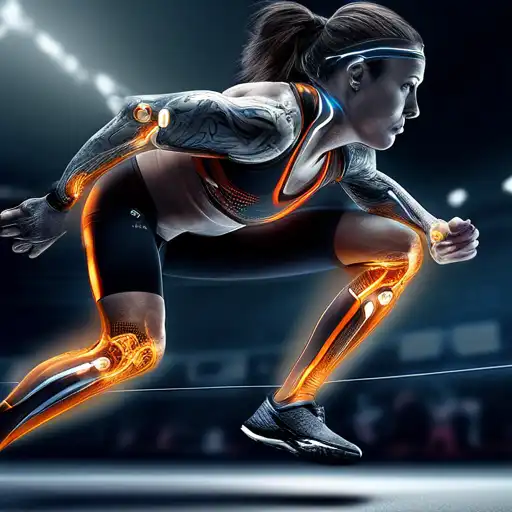Introduction to Wearable Technology in Sports
In the realm of competitive sports and personal fitness, the advent of wearable technology has marked a significant turning point. These innovative devices, designed to be worn on the body, offer athletes and fitness enthusiasts unprecedented insights into their performance, health, and recovery processes. From smartwatches that track heart rate and calories burned to advanced garments that monitor muscle activity, wearable tech is revolutionizing how athletes train, compete, and recover.
The Science Behind Wearable Tech
At the core of wearable technology for athletes is the integration of sensors and software that collect and analyze data in real-time. These devices leverage cutting-edge technologies such as accelerometers, gyroscopes, and heart rate monitors to provide detailed feedback on an athlete's performance. This data can then be used to tailor training programs, prevent injuries, and optimize recovery times, offering a competitive edge to those who utilize it effectively.
Key Benefits of Wearable Tech for Athletes
- Enhanced Performance Tracking: Wearable devices provide real-time data on various metrics such as speed, distance, heart rate, and more, allowing athletes to monitor their performance closely.
- Injury Prevention: By monitoring stress levels and muscle activity, wearables can help identify potential injury risks before they become serious.
- Optimized Recovery: Recovery is just as important as training. Wearable tech can track sleep patterns and muscle recovery, ensuring athletes are fully prepared for their next session.
- Personalized Training Programs: With the data collected, coaches and athletes can create highly personalized training programs that cater to the individual's specific needs and goals.
Popular Wearable Tech Devices for Athletes
The market is flooded with a variety of wearable devices tailored to athletes. Some of the most popular include fitness trackers like the Fitbit Charge, smartwatches such as the Garmin Forerunner, and specialized gear like the Whoop Strap, which focuses on recovery and strain. Each of these devices offers unique features designed to enhance athletic performance.
Future Trends in Wearable Tech for Athletes
The future of wearable technology in sports looks promising, with advancements in AI and machine learning paving the way for even more sophisticated devices. Future wearables may offer predictive analytics, more accurate health monitoring, and even augmented reality interfaces to provide real-time feedback during training sessions. As technology continues to evolve, the potential for wearable tech to enhance athletic performance is limitless.
Conclusion
Wearable technology for athletes is more than just a trend; it's a transformative tool that is reshaping the landscape of sports and fitness. By providing detailed insights into performance, health, and recovery, these devices empower athletes to push their limits safely and effectively. As we look to the future, the integration of wearable tech in athletic training and competition is set to become even more prevalent, offering exciting possibilities for athletes at all levels.
